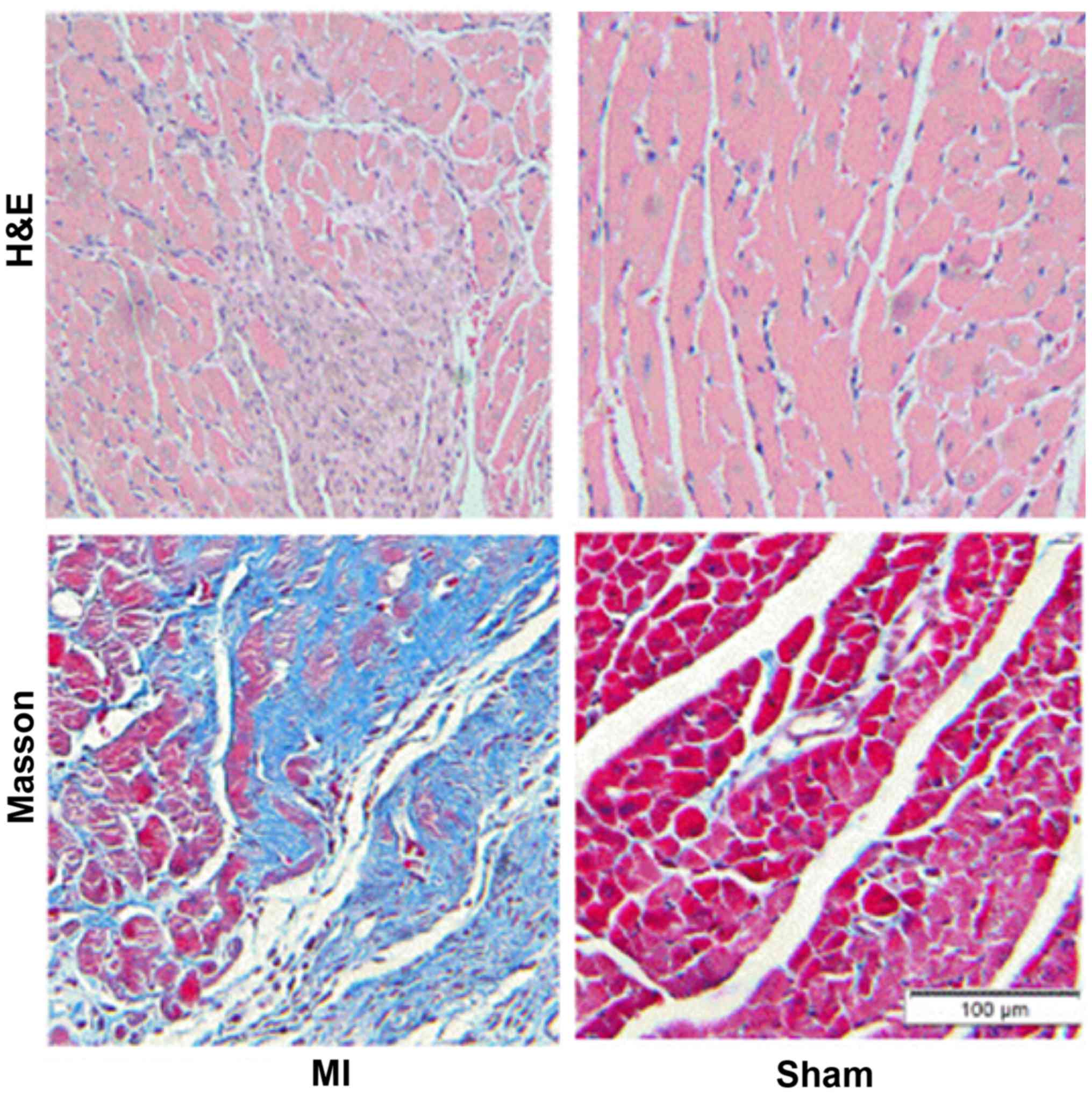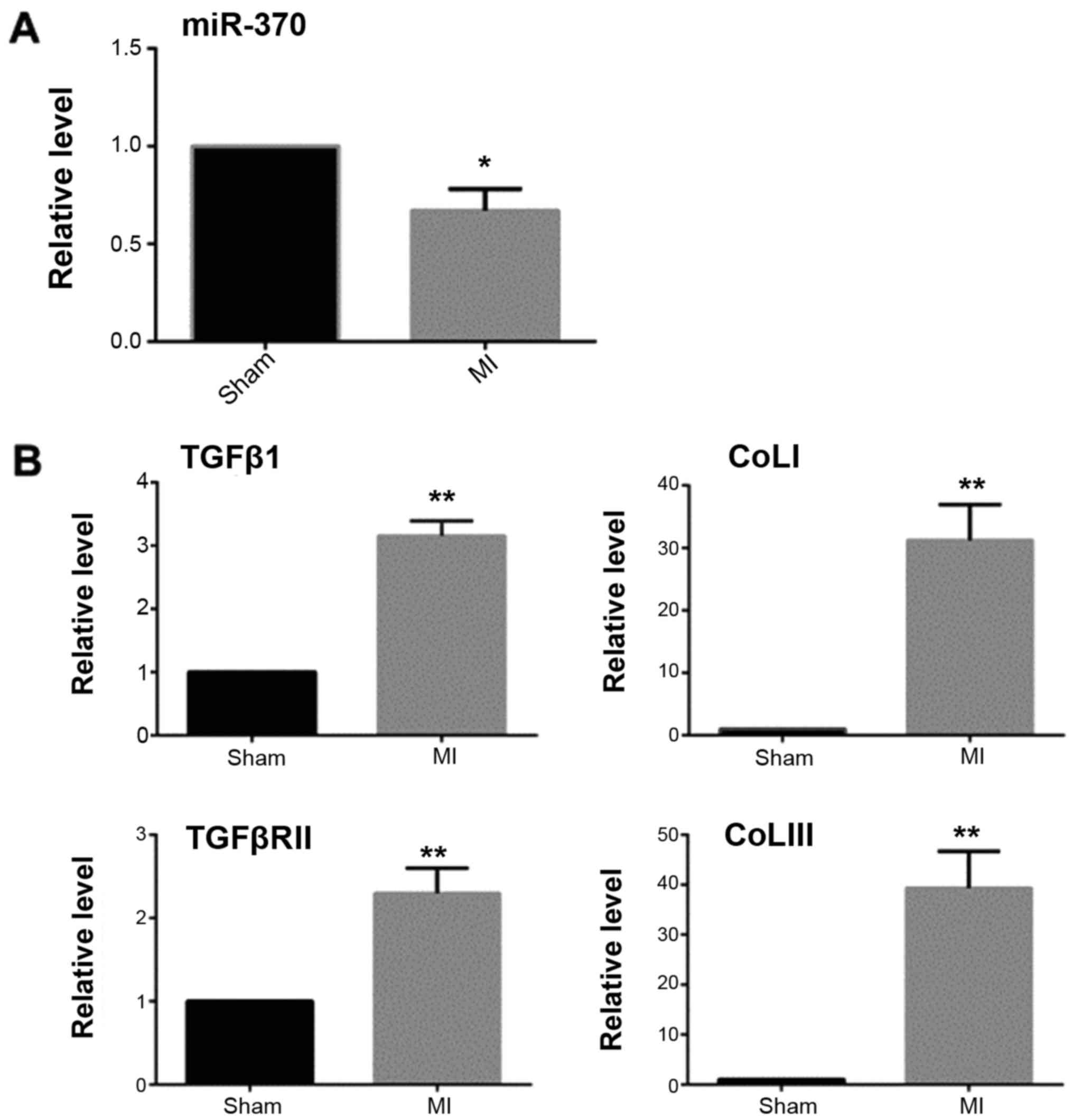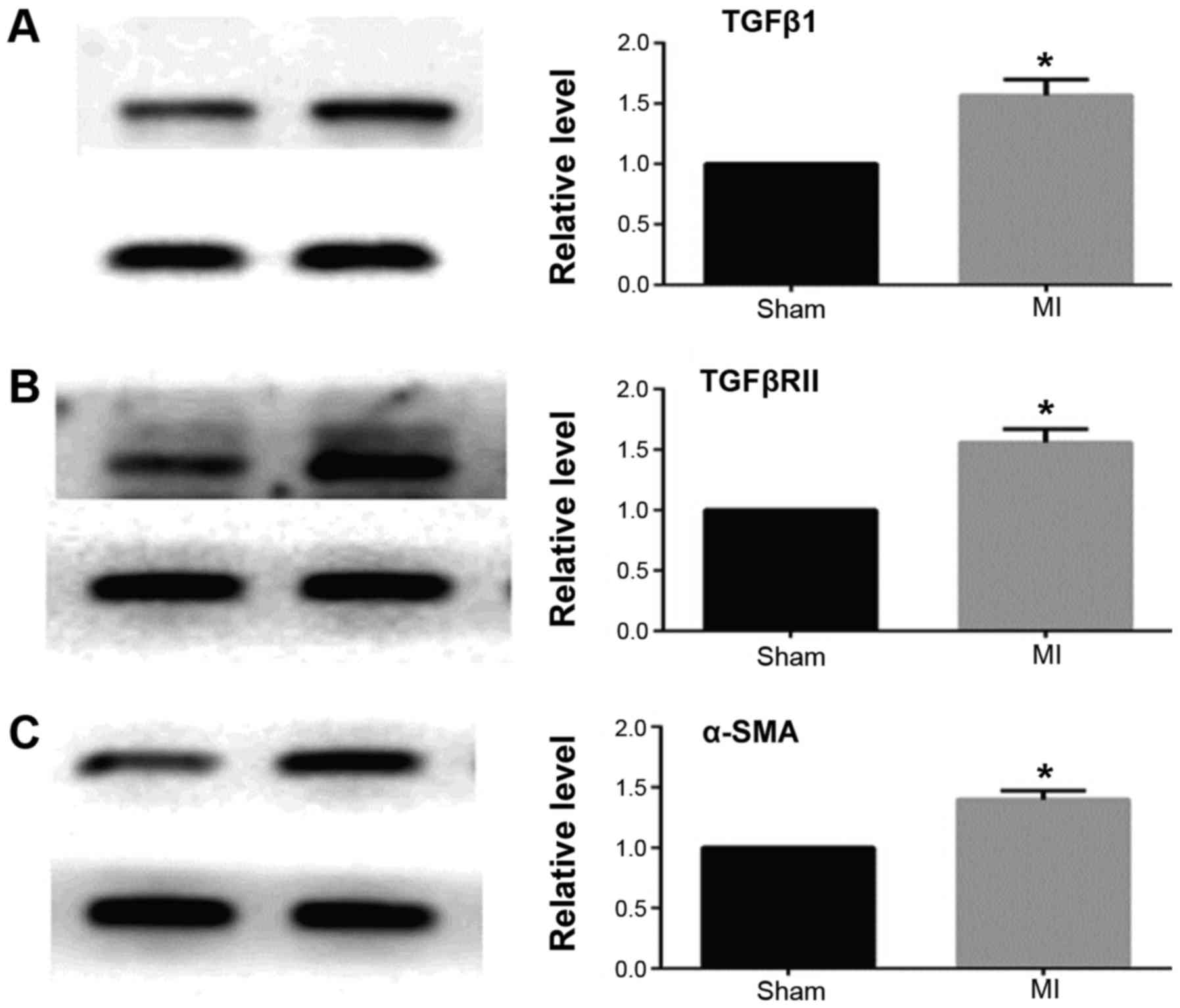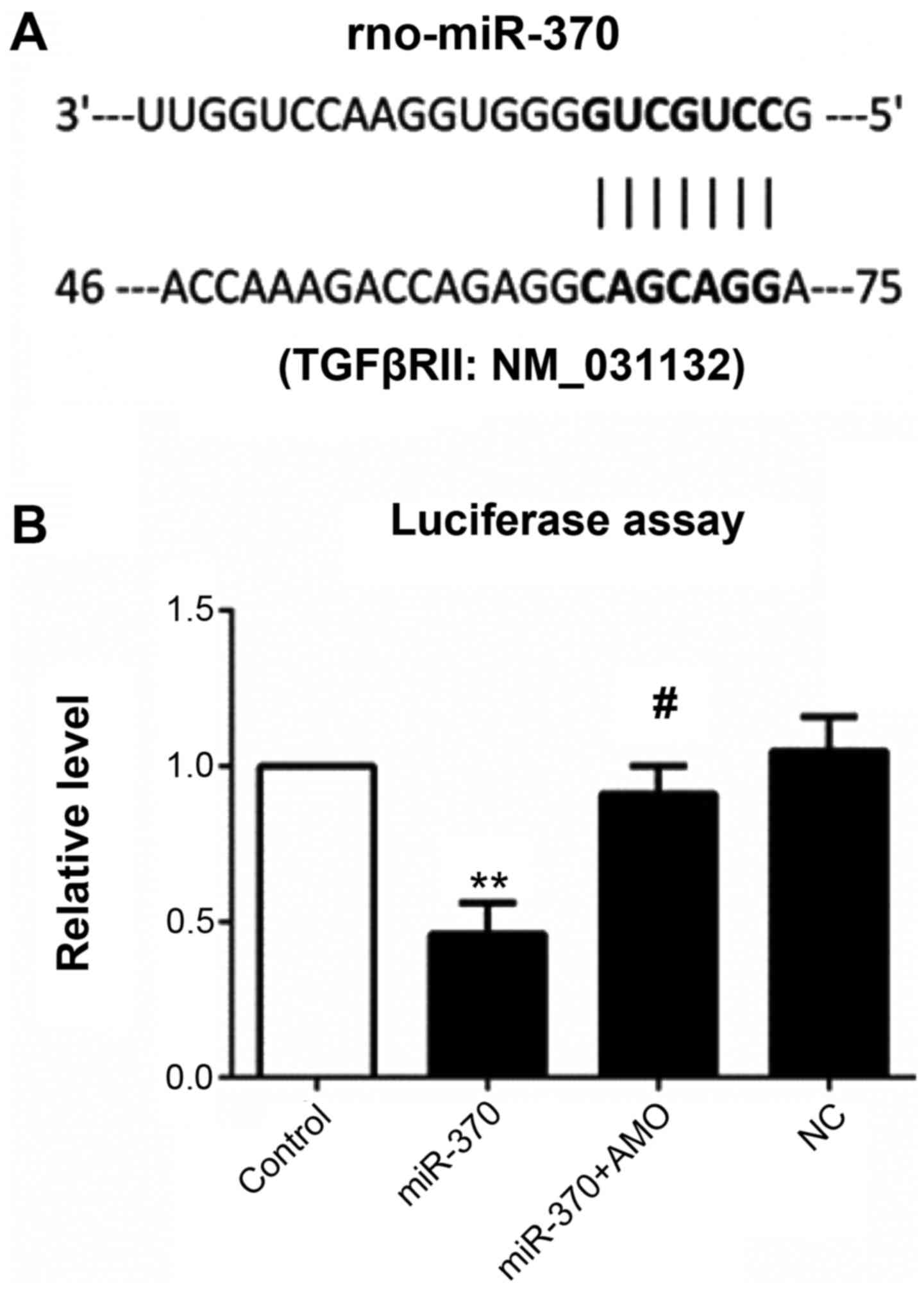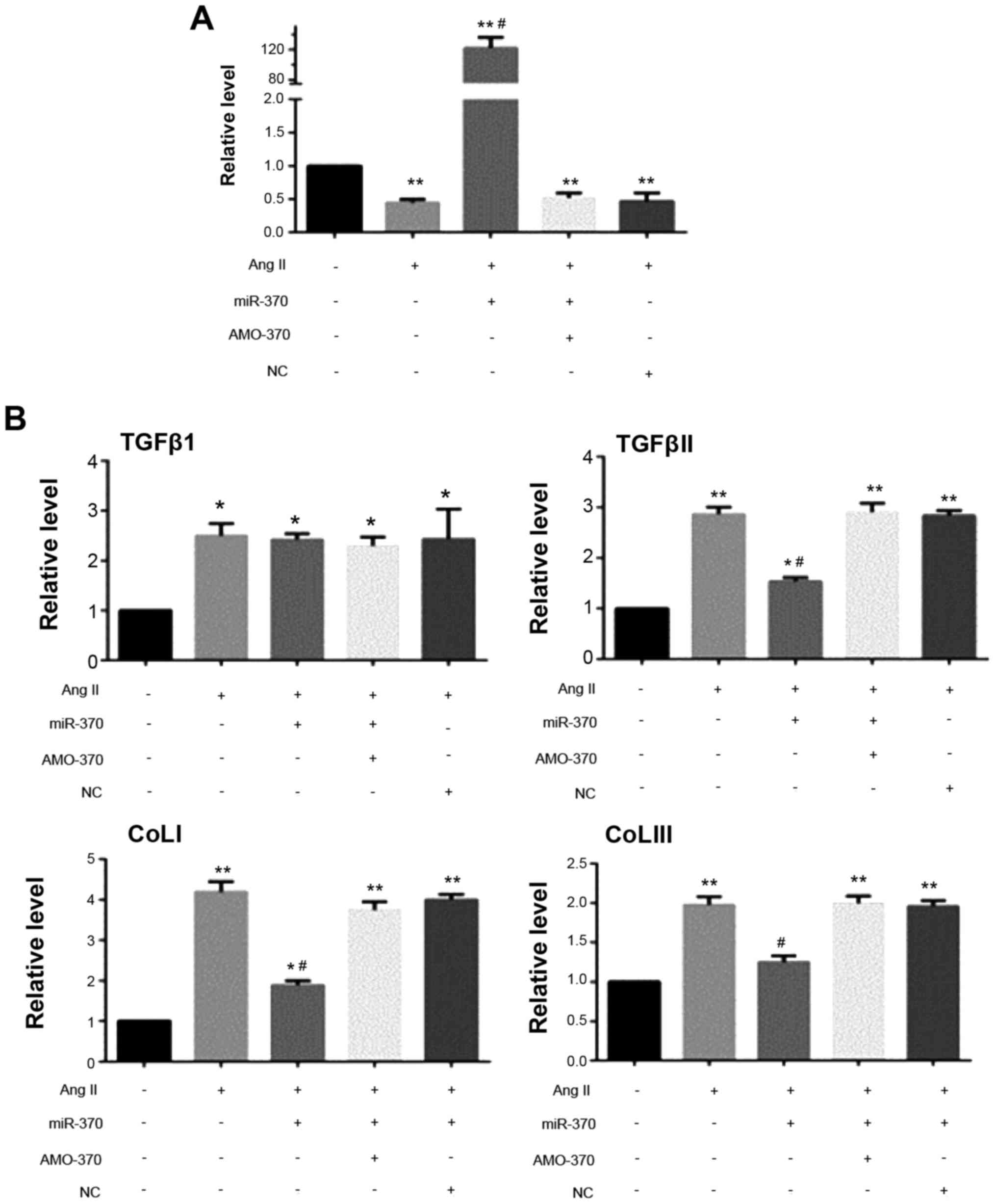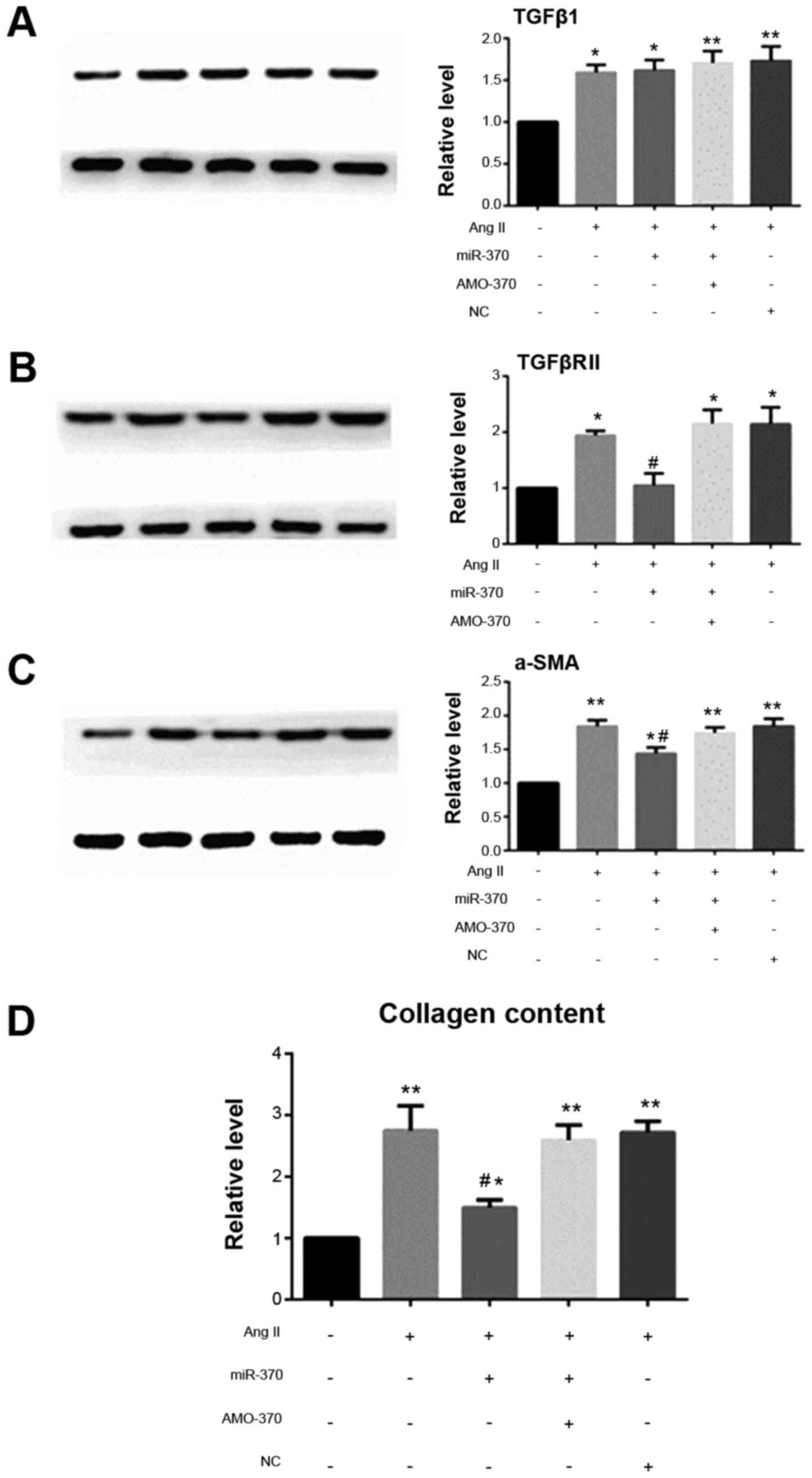The role of miR‑370 in fibrosis after myocardial infarction
- Authors:
- Published online on: March 27, 2017 https://doi.org/10.3892/mmr.2017.6397
- Pages: 3041-3047
-
Copyright: © Yuan et al. This is an open access article distributed under the terms of Creative Commons Attribution License.
Metrics: Total
Views: 0 (Spandidos Publications: | PMC Statistics: )
Total PDF Downloads: 0 (Spandidos Publications: | PMC Statistics: )
Abstract
In the present study, we investigated the expression of miR‑370 in the border area of infarction after myocardial infarction and its role in the process of post‑infarction fibrosis. A myocardial infarction model in Sprague-Dawley rats was established. After two weeks, the mRNA levels of transforming growth factor‑β1 (TGFβ1), TGFβRII, ColIa1, ColIIIa1 and miR‑370 and the expression of TGFβ1, TGFβRII and α-smooth muscle actin (α-SMA) proteins in the border area of infarction were detected by real-time fluorescence quantitative polymerase chain reaction (qRT-PCR) and western blot analysis. Cardiac fibroblasts in neonatal rat were isolated and cultured, and the changes in the above indicators were detected after AngII and miR‑370 intervention. Luciferase reporter gene assay was conducted to verify whether TGFβRII was a target gene of miR‑370. In the border area after myocardial infarction, the expression of miR‑370 decreased, while mRNA levels of TGFβ1, TGFβRII, ColIa1 and ColIIIa1 and levels of TGFβ1, TGFβRII and α-SMA proteins were all increased. Luciferase reporter gene assay confirmed that TGFβRII was the target gene of miR‑370. miR‑370 reduced the expression of TGFβRII and inhibited the increased expression of TGFβRII and collagen protein caused by AngII. As well, its inhibited the differentiation effect of muscle fibroblasts while it did not inhibit the expression of TGFβ1. miR‑370 inhibited the expression of TGFβRII protein by combining with TGFβRII mRNA. miR‑370 also partially blocked TGFβ1‑TGFβRII and induced the downstream signal transduction pathways, thus exerting anti‑fibrotic effects.



